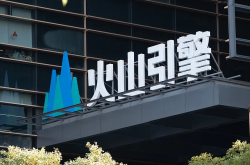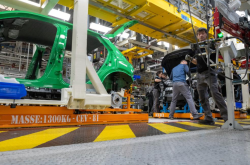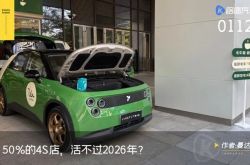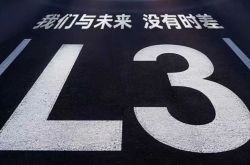Revolutionizing the Intelligent Driving Battlefield: Joint Venture Automakers' Strategic Counterattack
![]() 04/28 2025
04/28 2025
![]() 619
619
As BYD announced that all its models will come standard with the "Divine Eye" technology, and Dongfeng Nissan N7 teamed up with Momenta to enter the fray, the automotive industry's transformation, initially sparked by a price war, is now igniting a profound revolution in intelligent driving.
In early 2025, China's auto market witnessed sudden shifts in the intelligent driving landscape. In February, BYD led the charge with the launch of the Seagull Intelligent Driving version at 79,800 yuan, affirming that all its models would feature the "Divine Eye." Subsequently, the intelligent driving sector was thrown into turmoil as Tesla FSD China hastily entered the market, and independent brands such as Geely Yinhe, Dongfeng LanTu, Chery Automobile, and GAC Group successively unveiled plans for mass production of L3 autonomous driving.
However, just as most anticipated independent brands and Tesla to dominate, joint venture automakers suddenly gained momentum. In March, Dongfeng Nissan N7 collaborated with Momenta, claiming its high-speed NOA (Navigation on Autopilot) system could stably operate at 130 km/h. Closely following was the GAC Toyota Bozhi 3X, priced at 149,800 yuan for its high-end intelligent driving version equipped with the NVIDIA Orin X chip boasting 254 TOPS of computing power, and racking up over 10,000 orders within an hour. This complexified the market landscape, sparking numerous questions: Who is Momenta? Why has the market undergone such drastic changes? After addressing shortcomings in intelligent driving, is the renaissance of joint venture automakers finally upon us?
The Era of Universal NOA Is Upon Us
Market data underscores the magnitude of this upheaval: from January to December 2024, passenger vehicles equipped with standard high-speed NOA in the Chinese market (excluding imports and exports) delivered 1.9747 million units, a year-on-year increase of 162.31%. Notably, the urban NOA segment currently accounts for nearly 40%, up from less than 10% at the beginning of last year.
From an industry perspective, this technological revolution is driven by algorithm iteration and cost reduction. Industry data indicates that the cost of high-end intelligent driving hardware is plummeting at a rate of 40% per year. This price decline is reshaping the market. Once exclusive to models priced above 300,000 yuan, urban NOA is now accessible in vehicles priced at 150,000 yuan or even 100,000 yuan. For instance, GAC AION introduced the second-generation AION V and AION RT models last year, both priced at the 150,000 yuan level and equipped with full-scenario NOA functions leveraging lidar.
Industry analysts predict that by late 2025 to early 2026, the cost of urban NOA hardware will further decline to the 5,000 yuan range. A common industry maxim suggests that intelligent driving costs will halve from current levels next year.
Simultaneously, the evolution of intelligent driving technology routes has provided joint venture automakers with an opportunity to "overtake on corners." Traditionally, intelligent driving solutions heavily relied on lidar, fostering the notion that "more lidar equals stronger intelligent driving capability." However, the emergence of the "end-to-end" model completely disrupted the traditional "perception-decision-execution" architecture. This "light hardware, heavy algorithm" approach directly translates two-dimensional camera pixels into control instructions, reducing training costs to 1% of traditional methods and demonstrating remarkable advantages in handling complex traffic scenarios. Tesla FSD V12's "human-like driving" capability and Momenta's seamless performance in complex intersections exemplify the disruptive nature of this technological shift.
Joint venture automakers' counterattack may be attributed to this shift. Dongfeng Nissan N7, for example, utilizes a pure vision solution that does not require lidar and achieves high-level intelligent driving capabilities like high-speed NOA, urban memory NOA, and full-scenario smart parking through end-to-end algorithms. Compared to traditional solutions, this reduces per-vehicle costs by over 30%.

This cost reduction isn't merely a decrease in hardware but a leap in experience through algorithm upgrades. The end-to-end model condenses regulation and control code from millions to thousands of lines, lowering marginal R&D costs and enhancing iteration efficiency. For joint venture giants with annual sales in the millions, the scale benefits of this transformation will undoubtedly multiply exponentially.
Localization Becomes the Strategic Fulcrum of Joint Venture Counterattacks
As Huawei ADS 3.0 achieves nationwide intelligent driving capability and Momenta's end-to-end system lands on joint venture brand mass production vehicles, a clear industrial landscape emerges: Chinese intelligent driving solutions have become the technological backbone for the global automotive industry. Beyond Dongfeng Nissan and GAC Toyota, other joint ventures have also made strides in "making up for shortcomings." For instance, in the luxury car market, joint venture automakers have sounded the clarion call for counterattacks.
Take the SAIC Audi A5L as an example. As the first model of Audi's new PPC platform, it not only features the latest EA888 engine but also deeply collaborates with Huawei to equip the Qiankun ADS 3.0 high-level intelligent driving system. This not only elevates the vehicle's intelligent driving assistance capabilities but also significantly boosts its overall intelligence.
"By jointly developing new products with Chinese partners, our goal is to swiftly apply innovative Chinese technologies," said Audi CEO Gernot Döllner. In terms of intelligence, from 2025 onwards, advanced intelligent driving assistance systems incorporating Huawei technology will be integrated into Audi models based on the PPE and PPC platforms specifically designed for the Chinese market.
From a broader perspective, to safeguard their market position, today's joint venture automakers are no longer shackled by their previous conservative strategies in intelligent driving configuration. They are adopting recognized high-level intelligent driving system "standard configurations" such as high-performance NVIDIA Orin chips, lidar, and end-to-end algorithms, demonstrating their commitment and action to accelerate intelligent transformation.
According to recent news, BMW China announced on March 17 that it has reached a cooperation agreement with Huawei Terminal to deeply integrate the HarmonyOS ecosystem in China. Among other initiatives, the BMW digital key function developed on HarmonyOS NEXT will be launched within the year, and the deeply integrated HUAWEI HiCar will be first equipped on BMW's new-generation models in 2026.
"In China, nearly a quarter of My BMW App users utilize Huawei terminal devices. Through deep integration with the HarmonyOS ecosystem, BMW will comprehensively upgrade in-vehicle applications and intelligent connectivity experiences for HarmonyOS users, enhancing the intelligent driving pleasure in high-frequency use scenarios," said Gao Xiang, President and CEO of BMW Group Greater China. China is evolving into a global innovation engine, and BMW will usher in the era of local cooperation 2.0 through co-research and co-creation with more Chinese technology enterprises.
Ecological Reconstruction Ushers in a New Paradigm
The above cases reveal that since 2025, foreign automaker executives have frequently expressed their commitment to "strengthening localized cooperation in China," with news of collaborations between foreign brands and Chinese local enterprises following suit. This strategy of leveraging "foreign aid" to address "shortcomings" is becoming a consensus among multinational automakers.
Recently, Zhu Jiangming, Chairman of Leapmotor, revealed that Leapmotor is discussing cooperation with Ferrari on parts and other aspects. Subsequently, Hesai Technology announced a milestone multi-year exclusive collaboration with a top European OEM to provide high-performance ultra-long-range lidar for its next-generation automotive platforms, encompassing multiple models of fuel and new energy vehicles.
"In the traditional fuel vehicle sector, there is a gap between China and developed countries like Europe and the United States. However, in the field of new energy vehicles, China started earlier and has developed certain industrial advantages in battery technology, vehicle manufacturing, charging facilities, etc.," said Cui Dongshu, Secretary-General of the Passenger Car Association. China's independent automakers' strength and globalization are unstoppable, and joint ventures should increase their local investment in China.
The market is responding positively. The AITO series equipped with Huawei ADS continues to dominate the mid-to-high-end market, and the installation of Momenta solutions is rapidly rising in the joint venture camp, affirming consumers' recognition of local intelligent driving solutions. This technological confidence has enabled the Chinese auto industry to achieve "solution output" in core technologies for the first time.
Audi has entrusted the development of its global models' intelligent driving system to Huawei, and Tesla FSD's "water and soil unsuitability" upon entering China underscores this. In contrast, the "Chinese road DNA database" built by Momenta, Huawei, etc., has amassed over 3 billion kilometers of scenario data, capable of accurately identifying special road conditions like timed control of bus lanes and electric vehicle tidal flows. This data closed-loop advantage enables joint venture automakers to avoid cross-border data risks and achieve "weekly" algorithm iteration. The opening of L3 testing licenses in Beijing, Shanghai, and other cities, along with the intelligent connected vehicle demonstration zones in Guangzhou and Shenzhen, provide realistic sandboxes for technological evolution.
As we stand on the cusp of 2025 and look back, this intelligent driving competition has transcended mere technological rivalry. As joint venture automakers leverage Chinese solutions to achieve intelligent breakthroughs, and independent brands gain global discourse power through technology output, a more dynamic new industrial ecology is taking shape. The ultimate significance of this transformation may lie in proving that open innovation is more vital than closed independent research and development. As the "Chinese solution" begins to define global intelligent driving standards, we witness not only the reshaping of the market landscape but also the dawn of a powerful automotive nation's true rise.
Note: This article was first published in the "Hot Spot Tracking" column of the April 2025 issue of the "Auto Industry Review" magazine. Please stay tuned.

Image: From the Internet
Article: Auto Industry Review
Typesetting: Auto Industry Review






